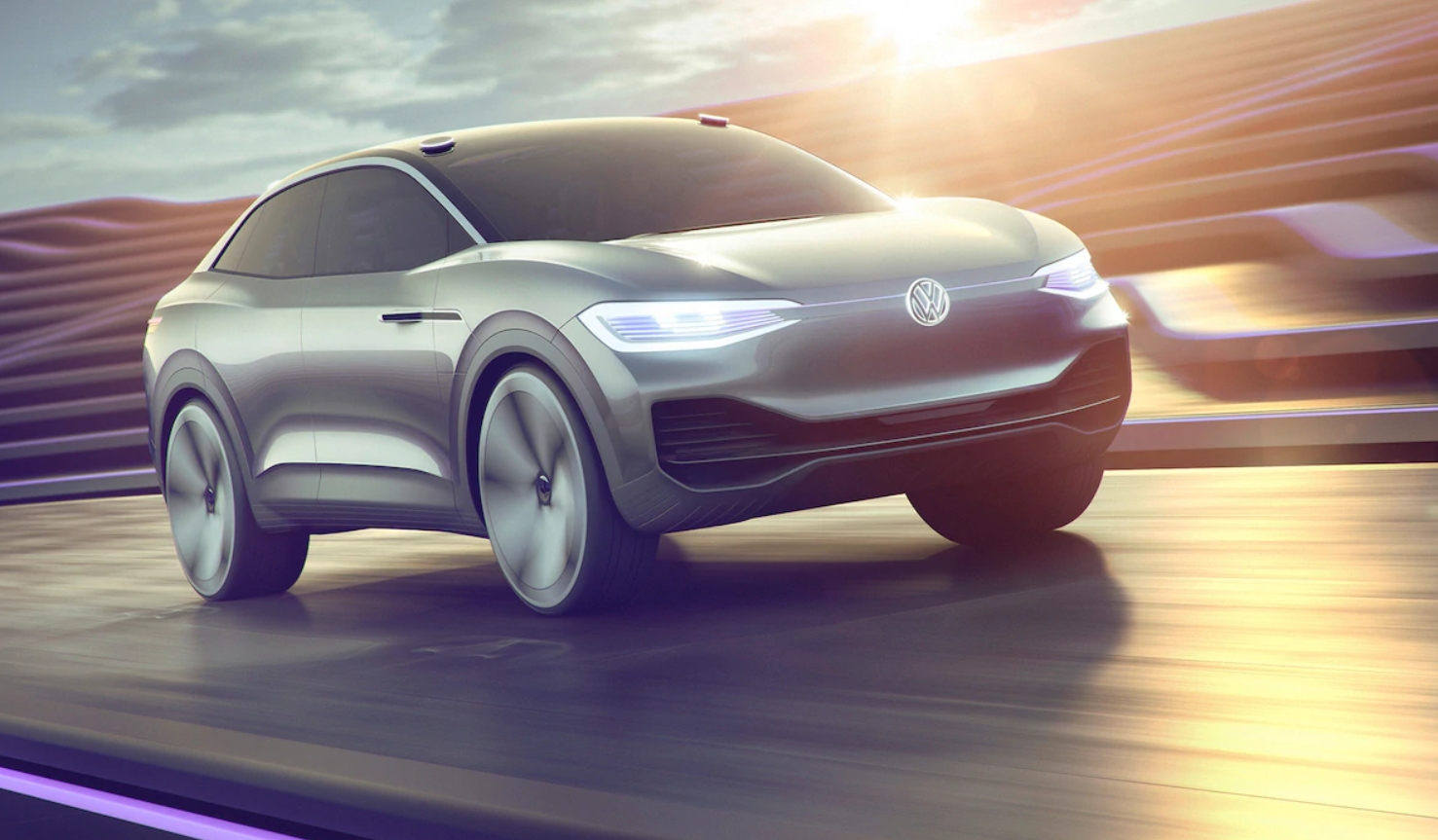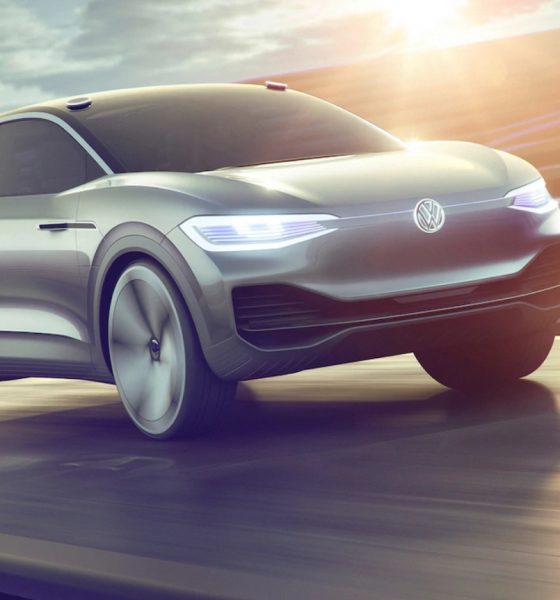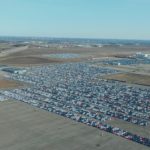

News
Volkswagen receives ‘Dieselgate’ lawsuit in Germany amid new EV plant announcements
Auto titan Volkswagen is facing a class-action lawsuit from German customers who purchased diesel vehicles equipped with emissions-cheating defeat devices. The new suit was made possible by a new legislation that took effect on November 1, which was expedited to beat a year-end statute of limitations for claims against Volkswagen.
Justice Minister Katarina Barley noted that an estimated two million Volkswagen owners could benefit from the new law. While the initial complaint against the German automaker is starting with just ten disgruntled Volkswagen drivers, the case, if deemed admissible by a judge, would be opened to other owners who wish to take part in the lawsuit as well. Thus, anyone who purchased a Volkswagen vehicle or one of the group’s Audi, Skoda, or Seat brands that are equipped with a diesel EA 189 engine from November 2008, would likely be qualified to file claims against the company.
Lawyer Ralf Stoll, part of the legal team coordinating the suit, called the case a legal “milestone,” while stating that “several tens of thousands” of VW owners could join the lawsuit, particularly since taking part in the complaint is free of charge. In a statement to the DPA News Agency, Klaus Müller of Germany’s VZBV consumer federation noted that November 1 would be a day that Volkswagen would remember.
“Volkswagen will remember this day as the moment the kid gloves of the politicians were replaced by the boxing gloves of consumer advocates,” he said.
- Drone flies closely over the thousands of VW Diesel vehicles being stored at the Rivian Factory. [Photo: Jim Finch]
- Thousands of VW Diesels being Stored at Rivian Factory. [Credit: Jim Finch/Teslarati]
Thousands of VW Diesels being Stored at Rivian Factory. [Credit: Jim Finch/Teslarati]
Christian Saefken, who purchased his Skoda Oktavia without knowing that his vehicle was equipped with an emissions testing cheat device, is among the owners who might join the lawsuit if it does go through.
“They have played us for fools. I wish they had been more honest from the start,” he said.
Volkswagen’s high-profile dieselgate scandal has resulted in steep penalties for the legacy carmaker. Since admitting that it knowingly cheated emissions tests, Volkswagen had paid out more than $31.9 billion in dieselgate costs, a portion of which went to around half a million US drivers who were offered buybacks and up to $10,000 in compensation.
In Germany, the legacy carmaker has paid authorities $2 billion in fines, though customers have only been offered software upgrades. Despite this, Volkswagen appears to be preparing to fight the upcoming class-action lawsuit, stating that the complaints have “no legal basis” since the company had already complied with all recall requirements.
“All the cars are technically sound and roadworthy,” a statement from the company noted.

Volkswagen’s new legal battle against diesel car owners comes amidst the company’s announcements for new electric car plants in Germany. According to a EuroNews report, the legacy carmaker is considering converting its plants in Emden and Hannover, Germany into pure-EV facilities. The German publication noted that the plans would be discussed in an upcoming strategy review on November 16.
Volkswagen CEO Herbert Diess recently expressed the company’s commitment to becoming a competitive player in the electric car market. The CEO even laid the gauntlet on first movers like Tesla, stating that by 2020, Volkswagen would be offering electric vehicles that match Tesla’s electric cars for half the price.
“We are coming on very strong now. We have invested 30 billion euros ($33.9 billion) in electromobility, we have already rededicated a plant in Zwickau, and we are building an electric vehicle plant in Shanghai. Truly highly attractive vehicles will begin arriving from Volkswagen as early as 2019. We will come in 2020 with vehicles that can do anything like Tesla and are cheaper by half,” he said.

Elon Musk
Elon Musk and Tesla AI Director share insights after empty driver seat Robotaxi rides
The executives’ unoccupied tests hint at the rapid progress of Tesla’s unsupervised Robotaxi efforts.

Tesla CEO Elon Musk and AI Director Ashok Elluswamy celebrated Christmas Eve by sharing personal experiences with Robotaxi vehicles that had no safety monitor or occupant in the driver’s seat. Musk described the system’s “perfect driving” around Austin, while Elluswamy posted video from the back seat, calling it “an amazing experience.”
The executives’ unoccupied tests hint at the rapid progress of Tesla’s unsupervised Robotaxi efforts.
Elon and Ashok’s firsthand Robotaxi insights
Prior to Musk and the Tesla AI Director’s posts, sightings of unmanned Teslas navigating public roads were widely shared on social media. One such vehicle was spotted in Austin, Texas, which Elon Musk acknowleged by stating that “Testing is underway with no occupants in the car.”
Based on his Christmas Eve post, Musk seemed to have tested an unmanned Tesla himself. “A Tesla with no safety monitor in the car and me sitting in the passenger seat took me all around Austin on Sunday with perfect driving,” Musk wrote in his post.
Elluswamy responded with a 2-minute video showing himself in the rear of an unmanned Tesla. The video featured the vehicle’s empty front seats, as well as its smooth handling through real-world traffic. He captioned his video with the words, “It’s an amazing experience!”
Towards Unsupervised operations
During an xAI Hackathon earlier this month, Elon Musk mentioned that Tesla owed be removing Safety Monitors from its Robotaxis in Austin in just three weeks. “Unsupervised is pretty much solved at this point. So there will be Tesla Robotaxis operating in Austin with no one in them. Not even anyone in the passenger seat in about three weeks,” he said. Musk echoed similar estimates at the 2025 Annual Shareholder Meeting and the Q3 2025 earnings call.
Considering the insights that were posted Musk and Elluswamy, it does appear that Tesla is working hard towards operating its Robotaxis with no safety monitors. This is quite impressive considering that the service was launched just earlier this year.
Elon Musk
Starlink passes 9 million active customers just weeks after hitting 8 million
The milestone highlights the accelerating growth of Starlink, which has now been adding over 20,000 new users per day.

SpaceX’s Starlink satellite internet service has continued its rapid global expansion, surpassing 9 million active customers just weeks after crossing the 8 million mark.
The milestone highlights the accelerating growth of Starlink, which has now been adding over 20,000 new users per day.
9 million customers
In a post on X, SpaceX stated that Starlink now serves over 9 million active users across 155 countries, territories, and markets. The company reached 8 million customers in early November, meaning it added roughly 1 million subscribers in under seven weeks, or about 21,275 new users on average per day.
“Starlink is connecting more than 9M active customers with high-speed internet across 155 countries, territories, and many other markets,” Starlink wrote in a post on its official X account. SpaceX President Gwynne Shotwell also celebrated the milestone on X. “A huge thank you to all of our customers and congrats to the Starlink team for such an incredible product,” she wrote.
That growth rate reflects both rising demand for broadband in underserved regions and Starlink’s expanding satellite constellation, which now includes more than 9,000 low-Earth-orbit satellites designed to deliver high-speed, low-latency internet worldwide.
Starlink’s momentum
Starlink’s momentum has been building up. SpaceX reported 4.6 million Starlink customers in December 2024, followed by 7 million by August 2025, and 8 million customers in November. Independent data also suggests Starlink usage is rising sharply, with Cloudflare reporting that global web traffic from Starlink users more than doubled in 2025, as noted in an Insider report.
Starlink’s momentum is increasingly tied to SpaceX’s broader financial outlook. Elon Musk has said the satellite network is “by far” the company’s largest revenue driver, and reports suggest SpaceX may be positioning itself for an initial public offering as soon as next year, with valuations estimated as high as $1.5 trillion. Musk has also suggested in the past that Starlink could have its own IPO in the future.
News
NVIDIA Director of Robotics: Tesla FSD v14 is the first AI to pass the “Physical Turing Test”
After testing FSD v14, Fan stated that his experience with FSD felt magical at first, but it soon started to feel like a routine.

NVIDIA Director of Robotics Jim Fan has praised Tesla’s Full Self-Driving (Supervised) v14 as the first AI to pass what he described as a “Physical Turing Test.”
After testing FSD v14, Fan stated that his experience with FSD felt magical at first, but it soon started to feel like a routine. And just like smartphones today, removing it now would “actively hurt.”
Jim Fan’s hands-on FSD v14 impressions
Fan, a leading researcher in embodied AI who is currently solving Physical AI at NVIDIA and spearheading the company’s Project GR00T initiative, noted that he actually was late to the Tesla game. He was, however, one of the first to try out FSD v14.
“I was very late to own a Tesla but among the earliest to try out FSD v14. It’s perhaps the first time I experience an AI that passes the Physical Turing Test: after a long day at work, you press a button, lay back, and couldn’t tell if a neural net or a human drove you home,” Fan wrote in a post on X.
Fan added: “Despite knowing exactly how robot learning works, I still find it magical watching the steering wheel turn by itself. First it feels surreal, next it becomes routine. Then, like the smartphone, taking it away actively hurts. This is how humanity gets rewired and glued to god-like technologies.”
The Physical Turing Test
The original Turing Test was conceived by Alan Turing in 1950, and it was aimed at determining if a machine could exhibit behavior that is equivalent to or indistinguishable from a human. By focusing on text-based conversations, the original Turing Test set a high bar for natural language processing and machine learning.
This test has been passed by today’s large language models. However, the capability to converse in a humanlike manner is a completely different challenge from performing real-world problem-solving or physical interactions. Thus, Fan introduced the Physical Turing Test, which challenges AI systems to demonstrate intelligence through physical actions.
Based on Fan’s comments, Tesla has demonstrated these intelligent physical actions with FSD v14. Elon Musk agreed with the NVIDIA executive, stating in a post on X that with FSD v14, “you can sense the sentience maturing.” Musk also praised Tesla AI, calling it the best “real-world AI” today.










